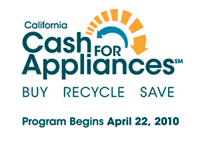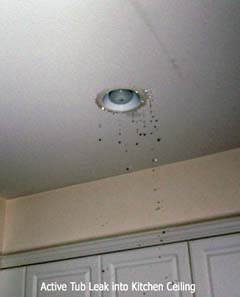Energy Retrofit Programs
The good news is there a slew of energy retrofit programs slated to be available to the San Diego County in the next few months. But, yes the bad news is good luck finding them.
For the past three months, Inspection Perfection has been researching and evaluating energy efficiency programs focused on home owners. For San Diego County alone, we’ve identified over 60 programs from free training to attractive rebates that can be paid through property taxes.
Inspection Perfection a San Diego based home inspector inspects over 250 homes annually of mostly existing homes. Our experience validates the lack of energy efficiency. Our favorable climate has allowed home owners to defer or ignore energy efficiency upgrades. Single pane windows, minimum insulation, neglected heating systems are common for many homes.
San Diego county home owners will greatly benefit from several key programs still in the making. One of the biggest motivations for these programs is to stimulate several key industries, real estate, manufacturing and construction. Construction industry is reported to have 38% unemployment.
Homestar – National
Legislation is underway to fund a $6 billion rebate program for residential energy retrofit. Rebates can be as much as $1,500, $3,000 for multiple rebates and higher when consumer commits to higher energy efficiency.
The biggest drive behind this program is to improve the ailing construction industry suffering depression like unemployment as high as 38% unemployment. The program will also help manufacturing while reducing our energy costs and our carbon footprint. Consumers are expected to save from $200 – $500 a year in energy costs. Homestar is expected generate three million home retrofits and tens of thousands of jobs.
Rebates range up to $1,500 for prescriptive upgrades and up to $3,000 for energy efficiency improvements by 20%. Some of the rebates will be eligible at point of sale. Other portions will require submission of forms for rebates.
Homestar is progressing through the legislature process with bipartisan support. It was just introduced to the Senate known as the Home Star Energy Retrofit Act of 2010.
Contractors must be certified as a home performance contractor. Training organizations like Performance Builders Institute (PBI), Calif Building Performance Contractors Assoc. (CBPCA) and Resnet offers training, certification and programs.
As this is still working through legislation, the best way to track program is thru Energy First, a nonprofit organization. Please visit: http://www.efficiencyfirst.org/about/
PACE – Property Assessed Clean Energy – July 2010 – San Diego
City of San Diego is in the final stages of rolling out an exciting energy efficiency program. Enacted statewide through assembly bill AB-811 allows energy efficiency upgrades to existing homes to be financed through your property taxes. This means no loan approval, & minimal out of pocket costs. Upgrades include ability to improve energy improvements such as upgrade to dual pane windows, insulation and solar photo voltaic systems.
A low interest 20 year loan will be attached to your property taxes. In the event of the property is sold, the asset and obligation will pass to the future owner.
Other San Diego County cities will also participate in a similar program through AB 811 called California First. So far, cities listed are Poway, Oceanside, Escondido, Carlsbad, Solana Beach, Encinitas Chula Vista, Santee, Imperial Beach, La Mesa and Lemon Grove, Visit www.californiafirst.org
The PACE Program is being administrated by the Center for Sustained Energy located in Kearny Mesa.
Similar to Homestar, contractors will require training and certification.
To stay abreast of PACE, please visit the Center for Sustain Energy website. Please follow the link specifically to PACE: http://energycenter.org/index.php/incentive-programs/pace-property-assesed-clean-energy . For all participating cities in San Diego, please visit www.californiafirst.org
SDGE Energy Rebate Program
SDG&E is working with PUC in approving an energy retrofit rebate program. The program is still in early development. Preliminarily for specific energy upgrades like rebates could be $1,000. For a whole house retrofit would qualify for $3,500.
Program is awaiting PUC approval in the next 30-45 days. The program tentatively is scheduled to launch in the June/July timeframe.
Any conscientious home owner should closely evaluate these programs. Some of these rebates can work together to highly absorbed these energy upgrade costs. These funds are limited and will be for a limited time and first come first serve basis.
![]()





 g lights were actively dripping, water was leaking from the fire sprinkler cover, stucco-taped seams were beginning to collapse, and water was coming through the side exterior doorway framing.
g lights were actively dripping, water was leaking from the fire sprinkler cover, stucco-taped seams were beginning to collapse, and water was coming through the side exterior doorway framing.





Recent Comments